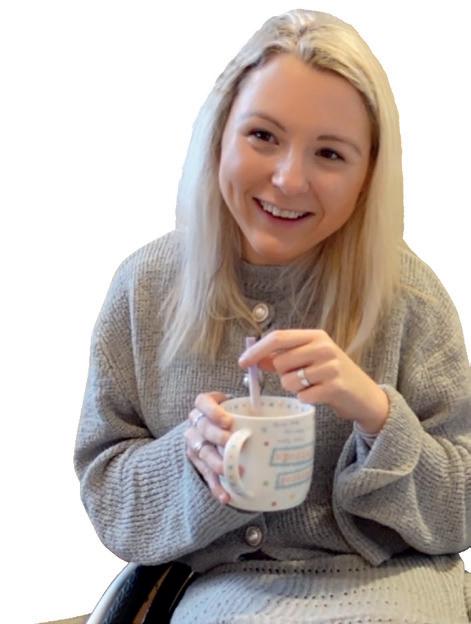
18 minute read
USE YOUR VOICE
Use Your
BY CAROLINE BUTTERWICK
Advertisement
Whether it’s leading a discussion with social work students about how to support someone in crisis or sharing our story as part of a campaign, there are lots of ways we can use our experience of living with disability
NOTHING ABOUT US WITHOUT US
“Nothing about us without us” is the well-known rallying cry of the disability rights movement. Campaigning led by disabled people has brought historic changes, such as the Disability Discrimination Act in 1995. Our voices should be key to developing and delivering services that support us, or in campaigns to challenge discrimination or make vital changes to the law. My interest in using my lived experience of visual impairment and mental ill health began when I was a student, forming a group with other disabled students to campaign for change. Who better to say how the campus can be made more accessible than those who know the barriers first-hand?
For the past two years, I’ve been a member of the Service User and Carer Reference Group (SUCRG) for Think Ahead, a charity that runs a two-year graduate programme in mental health social work, where those with lived experience of mental illness are active in the recruitment and training of future mental health social workers. The service user movement in mental health stretches back decades, with the “mad politics” of the 60s and 70s and Mad Pride activism of the 90s, evolving into the modern service user movement. Today, those with lived experience of mental distress are involved in everything from recruiting staff to developing training, with service users playing a key role in the recent Independent Review of the Mental Health Act. In SUCRG, we co-produce and co-deliver teaching, helping link lived experience with social work theory. SUCRG members are also involved in assessing prospective participants of the Think Ahead programme, interviewing them and being an active part of the recruitment process. One of my highlights of working with SUCRG was contributing to teaching at Think Ahead’s Summer Institute, where their new cohort of trainee mental health social workers first meet over several weeks to learn about social work ideas before starting their on-the-job training. It was great to share my experience of what makes a good social worker, as well as highlighting some of the negative sides of my experience as a service user and what needs to be better. We all carry our own stories and perspectives, and feedback from participants highlights how much they value hearing these.
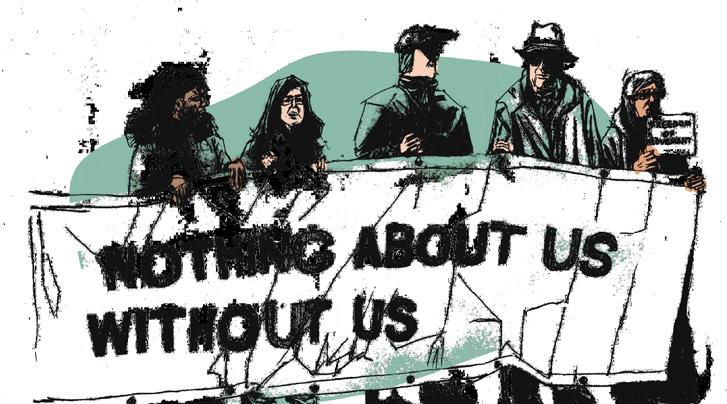
WHY GET INVOLVED?
Our voices can be used to influence policies and improve services. On a personal level, it can help you develop skills like confidence, team working and public speaking, and in some roles, earn money for your involvement. For me, one of the unexpected benefits of service user involvement is the chance to take ownership of my narrative. I get to tell my story in my own words in a life that has at times been greatly controlled by others. It’s also satisfying to see the impact of your work. As a disabled student, seeing the university install automatic doors and mark the edges of steps after we raised these issues was a great outcome, and one that wouldn’t have happened if we didn’t campaign. I also enjoy the social aspect of involvement and the sense of solidarity.

FINDING OPPORTUNITIES
There are opportunities to draw on your lived experience of disability in a range of settings. NHS trusts and social care providers are a good starting point. They may use terms like “patient panel”, “experts by experience” or “lived experience practitioner”. Universities often have service user groups for their health and social care courses. Research on the organisations’ websites, as many will advertise opportunities on there, sometimes under categories like “get involved” or on their main jobs page. If you can’t find anything, contact them and ask what lived experience opportunities they have. User-led organisations are those run by and for disabled people. They exist across the country and are a fantastic way to have your voice heard. Shaping Our Lives is a national organisation and network of user-led groups, service users and disabled people. Their website lists service user organisations across the country. The National Survivor User Network (NSUN) is a great resource for mental health service user involvement. It’s well worth signing up to their weekly newsletter, which links to relevant news stories and research in the sector and lists involvement opportunities. Charities and non-profits are usually keen to hear from people with lived experience to share their stories to challenge stigma, raise awareness, or contribute to their policy work. Some look for volunteers who are happy to work with the media, and many provide media training to help you feel confident working with journalists. There are other ways to get involved without committing to being part of a group or regularly campaigning with an organisation. Lots of disabled people use social media or their own blogs to share their experiences. You could also explore creative approaches, like poetry or art. And of course, writing articles about your lived experience is another avenue and could help you reach a large audience. Search online for guides on how to pitch article ideas to editors.
For those in work, look at getting involved in your trade union. Unions often have disabled members’ groups with their own meetings and conferences, and your branch may have roles like an equality or welfare officer. For students, look to your students’ union to see if there’s a group for disabled students – and if not, look at setting one up. Other opportunities include running disability awareness training, access auditing, peer mentoring, or inspecting services as an “expert by experience” with the Care Quality Commission. In SUCRG, we’ve been meeting and teaching online for the past year, so there are still ways to get involved even with the pandemic. There is such an abundance of opportunities out there for using lived experience. All of us have something valuable to contribute – so why not explore these opportunities and see how you can get involved?

WEBSITES
thinkahead.org shapingourlives.org.uk nsun.org.uk
Kids’
CORNER
Pancake Day is nearly upon us and there is no better time to get the kids in the kitchen to make a mess and enjoy some family time. The great thing about pancakes is that you can vary the recipe to suit so many diets and taste preferences and kids generally love them!
It is a stressful and worrying time for families with SEND children and although our children are resilient, a lot has been asked of them this last year. Let’s make the most of the opportunities for some light-hearted fun and distraction from what’s going on in the world.
Our young columnist this issue is Emily Nicole Roberts who has been sharing videos on YouTube to help young people living with cerebral palsy, you can read her thoughts on page 61. Regular columnist Dan White highlights the challenges facing families with disabled children during lockdown, read more on page 57. You will also find our usual host of innovative kids products on page 58. If there is anything you would like to see covered in a future issue please don’t hesitate to contact us by emailing ros@2apublishing.co.uk.

PRODUCTS
pg58
Pancake Day
BY ROSALIND TULLOCH

Shrove Tuesday falls on 16 February this year and it is a great excuse for indulging in delicious pancakes and for getting the kids in the kitchen for a bit of fun
There is nothing more delicious than tucking into freshly made pancakes covered in your favourite topping. Whether it be maple syrup, Nutella, jam, or fresh fruit and lashings of cream, it is comfort food like no other, and the great thing is that you can make variations to suit every diet.
Now, there is a bit of confusion around what constitutes a pancake and what you as an individual may associate with Pancake
Day, so whether it is a Scotch pancake, a crepe, a drop scone or American pancake that you make, be sure to enjoy it with your favourite toppings and favourite people!
It’s great fun getting the kids into the kitchen to make pancakes and you can ensure there is a job for everyone, from cracking eggs, to mixing the batter or being the very important taste tester. We have looked out some recipes that will suit a variety of tastes and diets, so look out your aprons and get ready for some floury fun with the kids.
VEGAN PANCAKES
This recipe has been adapted from the BBC Good Food website and will make approximately 16 pancakes. It gets great reviews on taste and fluffiness, and they are really simple to make.
INGREDIENTS
300g self-raising flour 1 tsp baking powder 1 tbsp sugar (any kind) 1 tbsp vanilla extract 400ml plant-based milk (soya, almond or oat) 1 tbsp vegetable oil for cooking
METHOD
1. Add the flour, baking powder, sugar, vanilla and a pinch of salt into a bowl and whisk together with a balloon whisk until mixed.
2. Slowly add the milk and whisk until you get a thick batter.
3. Heat a little oil on a non-stick frying pan over a medium heat.
4. Add two tablespoons of batter to form a small circle in the frying pan and leave for 3-4 minutes until you see the edges browning and bubbles appearing on top, then flip the pancakes over to cook on the other side for a further 2-3 minutes or until golden both sides. 5. You should be able to do these in batches of two to three pancakes. 6. Keep warm under a tea towel or in a low temperature oven until you are ready to eat. 7. Serves with your favourite toppings.



DAIRY FREE CREPES
These exceptional little delights are gluten and dairy free, the recipe is adapted from Becky Excell a gluten-free recipe creator based in London. Again this is a super simple recipe that produces deliciously light and thin crepes.
INGREDIENTS
220g gluten free plain flour 4 large eggs 450ml plant-based milk (soy, almond or oat) 1 tbsp vegetable oil (for cooking)
METHOD
1. Pour the flour into a large mixing bowl. 2. Beat in the four eggs one at a time.

3. Gradually pour in the milk while whisking, until you have a nice smooth, thin batter. 4. Transfer the batter to a jug. 5. Heat a little oil in a non-stick frying pan over a medium-high heat. 6. Pour the batter evenly into the hot pan and tilt it around to ensure the whole pan base is covered. 7. Fry for about 1 minute or until the edges look cooked before flipping carefully onto the other side to finish off cooking for 20-30 seconds or until golden brown. 8. Keep warm under a tea towel or in a low temperature oven until you are ready to serve.
9. Serve with some delicious toppings.

TOPPINGS
The best part about pancakes is the toppings you choose to put on them. Whether you like a traditional lemon and sugar flavour hit or you like to smother them in jam, some of you may even like a savoury option. We have created a thorough list of toppings below for some inspiration this Pancake Day: Maple syrup (or golden syrup) Nutella (or another chocolate spread) Jam Blueberries Strawberries Raspberries Banana Chopped hazelnuts (great over Nutella) Lemon Sugar (any kind) Whipped cream Chocolate chips Sprinkles
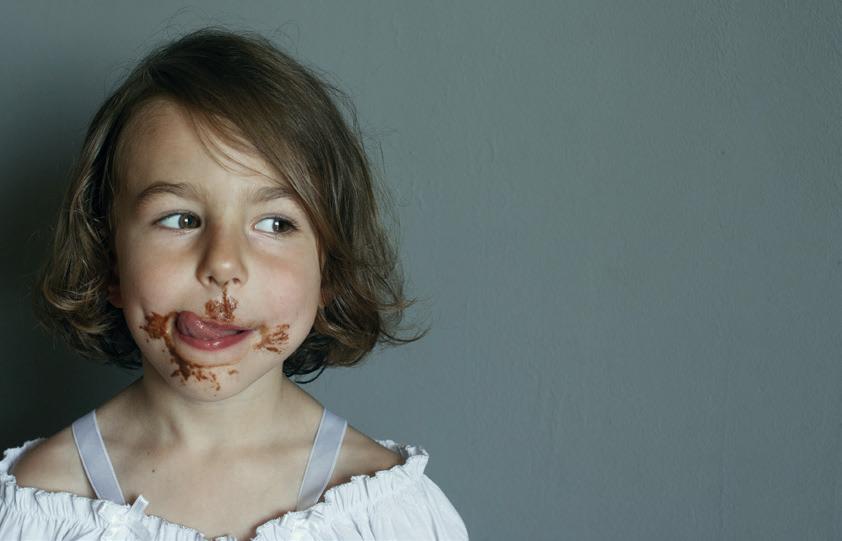
If you make some delicious pancakes this Shrove Tuesday be sure to share your pictures with us on Twitter @PosAbilityMag.

DAN WHITE
COLUMNIST
Follow Dan on Twitter @DeptOfAbility

Dan White, creator of the amazing Department of Ability superheroes and dad to Emily, who is 12 years old and has spina bifida, is a regular face in PosAbility, as he shares his experiences of life as a family with a disabled child.

LEFT BEHIND
Before writing this column I decided to put out a call on Twitter for lockdown experiences from parents of SEN and disabled children. The consensus was that families feel “abandoned and let down” over lockdowns. Carers like myself are feeling increasingly isolated and our children even more so. I’ve been reading emails and messages of the devastating impact of lockdown on children. Their parents have watched them lose vital life skills, retreat into non-communicative states, and watch years of intensive physiotherapy unwind, causing drastic physical health issues that impact negatively on the independence they have worked so hard to gain. One parent told me his son has had no input from professionals. No occupational therapist, no physiotherapy, no speech or language help. None of this is available unless he is attending school, school which he is too afraid to attend because of the risk of infection. Another said that her daughter’s physical and mental health is struggling as she has become too afraid to go outside because of COVID. What’s telling here is the way that the discussions around COVID have been so confusing from the government. I am a 48-year-old man with a bit of savvy and even I find it hard to peel away the layers of scientific language and slides. What chance does a child with a learning disability have in understanding the baffling language and snap decision-making that goes on? If we even struggle to translate policy to our children then the briefings are guilty of ableist practice, letting down millions of LD families, exacerbating their fears to the detriment of their health. The way information is spread, especially in pandemic times has to reach the ears of everyone easily, it has to be accessible and translatable. Children need reassuring in every form. Understanding and language aside, the most unsurprising message came from a dad who told me that all his son’s respite has stopped. His regular source of help (his wife’s parents) cannot visit as both of them have long-term health conditions which mean the care that they all require has ended. That’s three people abandoned, three people who require care who now, from somewhere, have to find the energy to look out for one another. I know there is no magic wand to summon up a COVID immune physiotherapist from somewhere, but who exactly is checking in on families like this? Charity phone lines can help, but as far as physical intervention goes, what is there? There is no direction from anyone in the Department for Health and Social Care, no path for families to follow, in short, there is simply silence from the very people who are in situ to actually care. We need and deserve direction, especially with the vaccine programme, but the system around us is shown to be not fit for purpose. We need at least a minister for carers, working and answerable to us. The ever-rising number of carers (6,000 extra more people a day) shows us that we are an essential and rapidly expanding community deserving of political representation. This needs to happen before there is a humanitarian crisis in our homes. Families are calling out and the political door stays firmly shut through apparent ignorance of disability. Our story is no different. Our daughter has been out of school for 10 months and the withdrawal of support has seen her mental health nosedive. The school has been silent in following up on her, she has withdrawn and CAMHS (Child and Adolescent Mental Health Services) is so broken that desperation has led us to pay for the support she needs. This is the final proof that services provided by the state are gutted, left to ruin and nonfunctional, unable to provide any support for the ones they were created to assist. Parents are having to pay, to increase the debt of already tight household budgets to save their children.
I know lockdown has been a difficult process for everyone, I’m not diminishing the effect it had on any other community, but it’s fair to say SEN children and their families have been isolating and shut-in longer than anyone else. Lockdown has been a continuing, gruelling reality, with no end in sight. The promise of “no one left behind” was broken on day one with care being a secondary thought from a government caught with its pants down and borders open. It’s not too late to address the concerns of 18 million people, not too late and not impossible.
TEETER POPPER
This funky little balance toy is a fantastic creation for kids. As kids stand, sit or kneel and rock on it the suckers underneath grip and release to make a popping noise, just like bubblewrap popping! A great fun toy it can also be used to help children relax and unwind with the rocking movement and therapeutic sound of the poppers.
happypuzzle.co.uk
The Skippi Plus powerchair with lift seat can offer your child increased mobility, allowing them to move independently and go off exploring just like children should. Thanks to its slim frame it is very manoeuvrable, allowing your child to access even the smallest of spaces or corners, and it can be taken apart easily for transport or storage.
ottobock.co.uk Prices from £29.99
JUMBO LACING BEADS
These jumbo beads are designed to be laced onto the string, helping to develop fine motor skills, dexterity and handeye coordination. The range of colours and shapes capture kids attention and encourage kids to focus on lacing all the beads as a fun game to make a snake, a necklace or a wiggly worm!
amazon.co.uk
Prices from £28
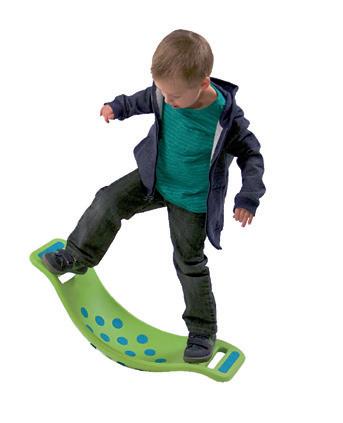

SKIPPI PLUS POWERCHAIR


Prices from £4,321
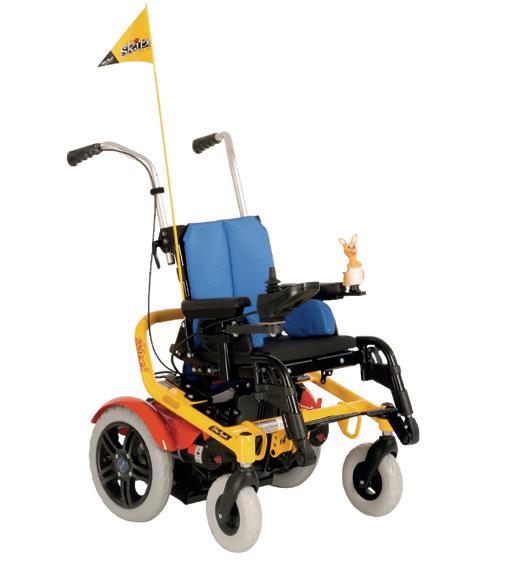

The YouTube videos I searched for, I now create. From getting dressed, to driving, to just being me, at the very least, hopefully, I’m showing others that they can be themselves too.

Hitting 1,000 subscribers on YouTube, working with the BBC, being shortlisted for a National Diversity Award, speaking on Radio One with Greg James, just last year alone, that all came from just being myself. If you take nothing else away from this piece just know this: You are enough because you are you. The truth is, there are billions of people on this planet but the universe chose you to be here, and guess what? There’s only one you so, I think you’re pretty awesome! You have made it through every single tough day because you are tougher. I hope to keep making videos until I change as many lives as I can. I know that whatever you put your mind to, you will achieve too. Please, just accept yourself.
FUTURE VOICES

Each issue we will be shining a light on a young disabled person who is blazing their own trail. Whether that be campaigning for access, giving up their time to help their community, achieving success in the sporting or arts arena, or educating their peers on disability. EMILY NICOLE ROBERTS
You can read Emily’s blog at emilynicoleroberts.com or follow her on Instagram at @emilynicoleroberts.
Emily Nicole Roberts lives with cerebral palsy. She is a wheelchair user and disability activist from Swansea, South Wales and her main aim is to change lives by sharing videos of hers on YouTube.
When I was 13, I trawled the internet for videos to guide me on getting dressed, exercising, and transferring; truly just to find advice on life and adapting to an un-adapted world. Sadly, I came up with nothing. My feelings of being lost increased, along with the incorrect notion of not belonging at all. I decided that disability was seemingly only recognised by the wider world for comedy or sporting purposes. I’m not funny, sporty or Stephen Hawking. What about just being normal? My self-esteem, even two years ago was non-existent. I wanted to be anything other than who I was. Until I bought a budget camera and tripod (because I never normally stick to things) and, decided to be the person that I needed when I was younger, once and for all. Fast forward a year, and I now realise that my cerebral palsy is life-changing, not life-limiting. If someone asked the question: “If I waved a magic wand, would you change anything?” My answer would be: not at all. My situation, pardon the pun here, allows me to stand out from the crowd. It enables me to be who I am. To pick up my camera and speak for those people, fight for those people, who may not otherwise be heard. Heck, I have only been given this opportunity as a result of my CP, so, how could I be anything other than grateful for that?
